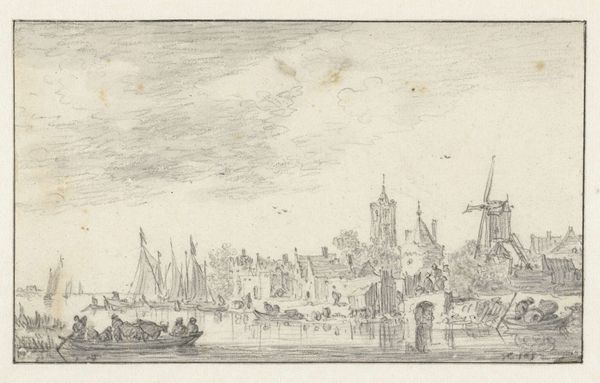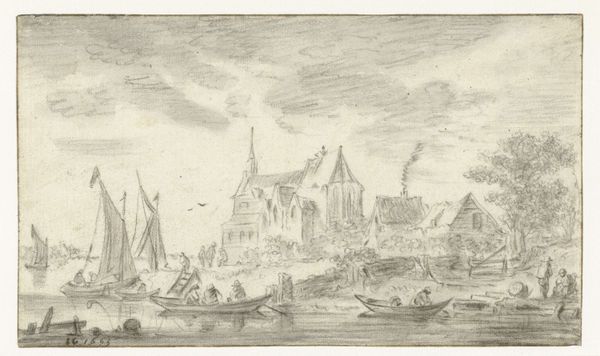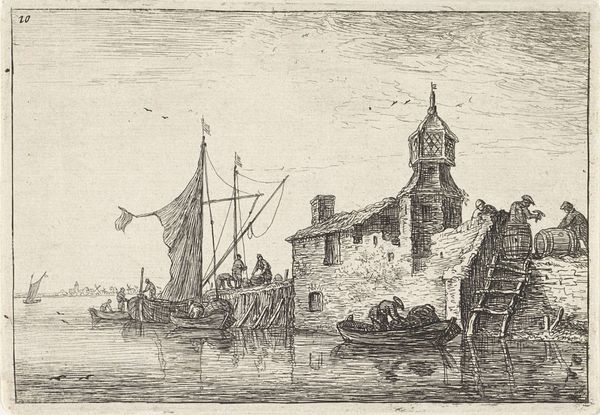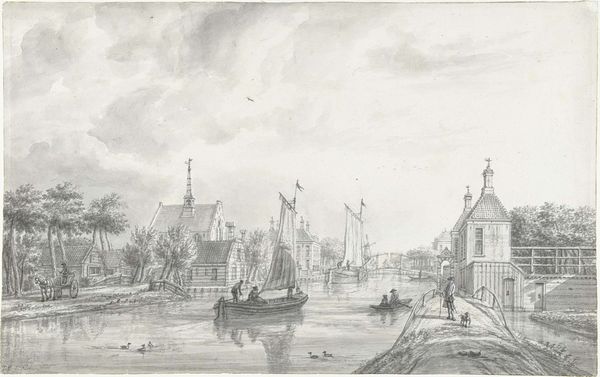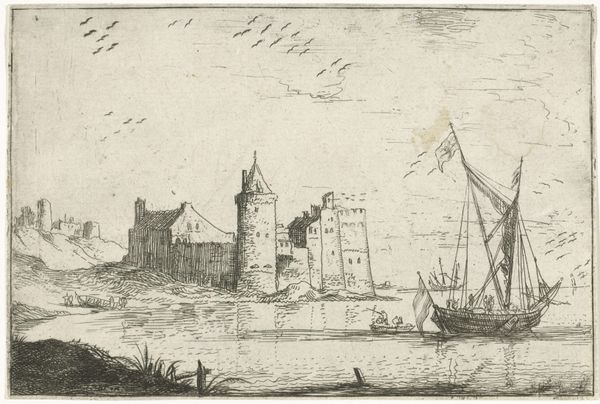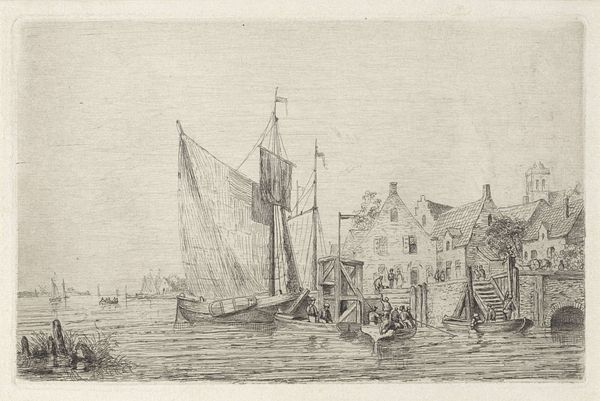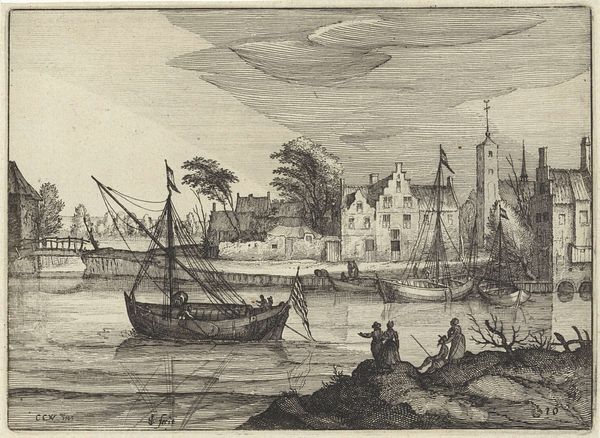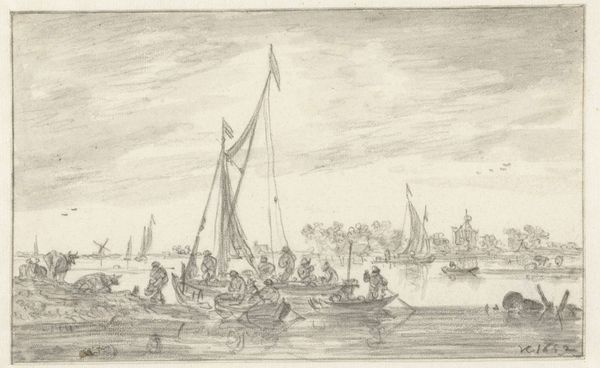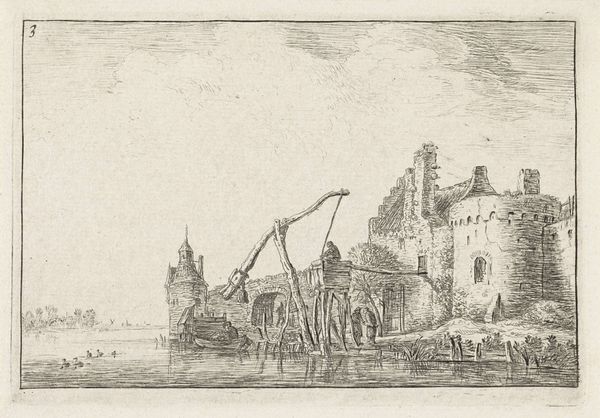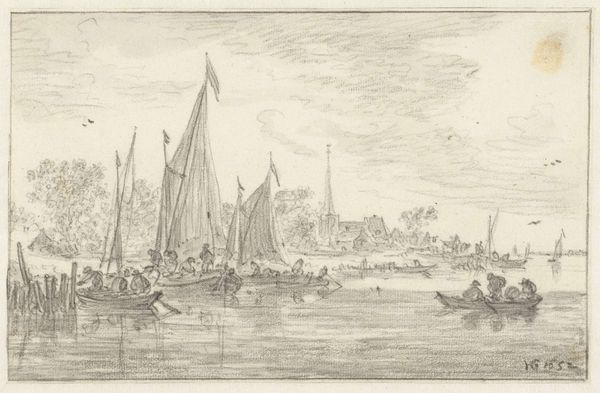
drawing, paper, ink
#
drawing
#
dutch-golden-age
#
pencil sketch
#
landscape
#
paper
#
ink
#
cityscape
Dimensions: height 172 mm, width 276 mm
Copyright: Rijks Museum: Open Domain
Hendrik Spilman created this etching of a riverscape with traders sometime in the 18th century. It depicts a hive of commercial activity taking place on a Dutch waterfront. But it is as much about the institution of art, as it is about commerce. Dutch landscape painting of this period, like this etching, often served as a form of national self-representation, reflecting the economic prosperity of the Netherlands during its Golden Age. The river, boats, and bustling figures symbolize trade and industry, key components of Dutch identity and power. The architecture suggests the presence of established civic institutions. Spilman’s choice of etching as a medium is also relevant, as prints allowed for wider distribution of images, contributing to a sense of shared national identity. By studying period documents such as trade records, personal letters, and other visual sources, we can gain a richer understanding of how art both reflected and shaped Dutch society and the place of such images in that society.
Comments
No comments
Be the first to comment and join the conversation on the ultimate creative platform.
